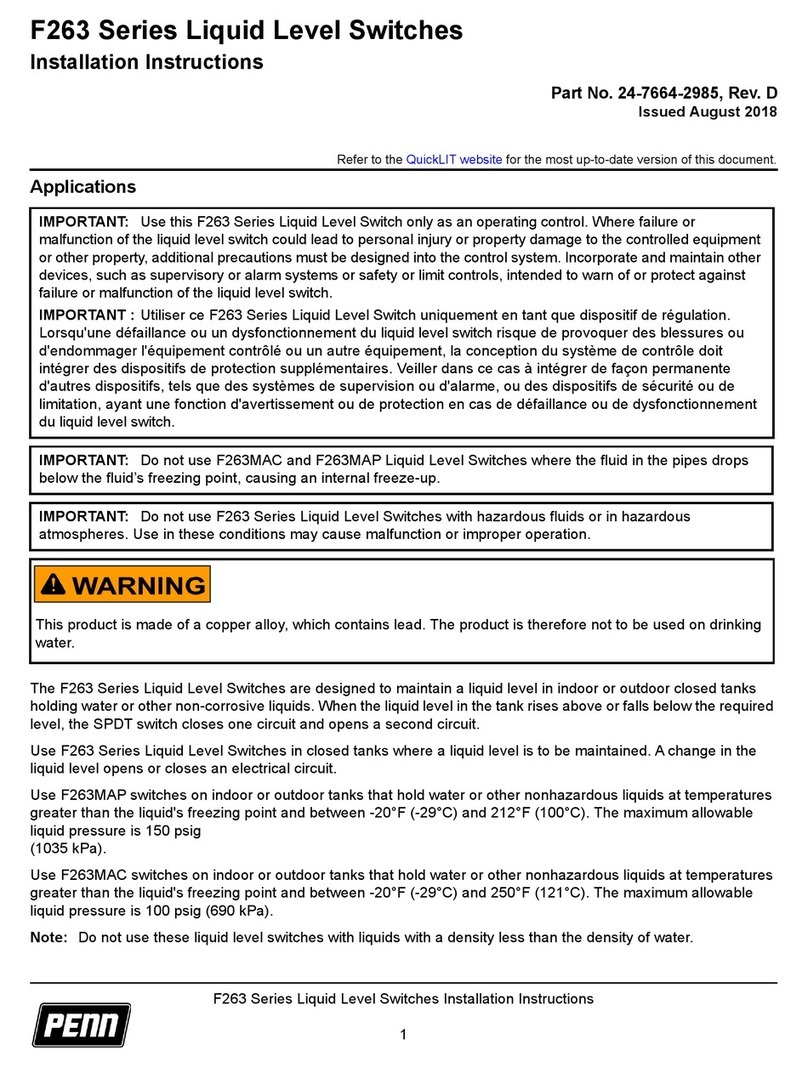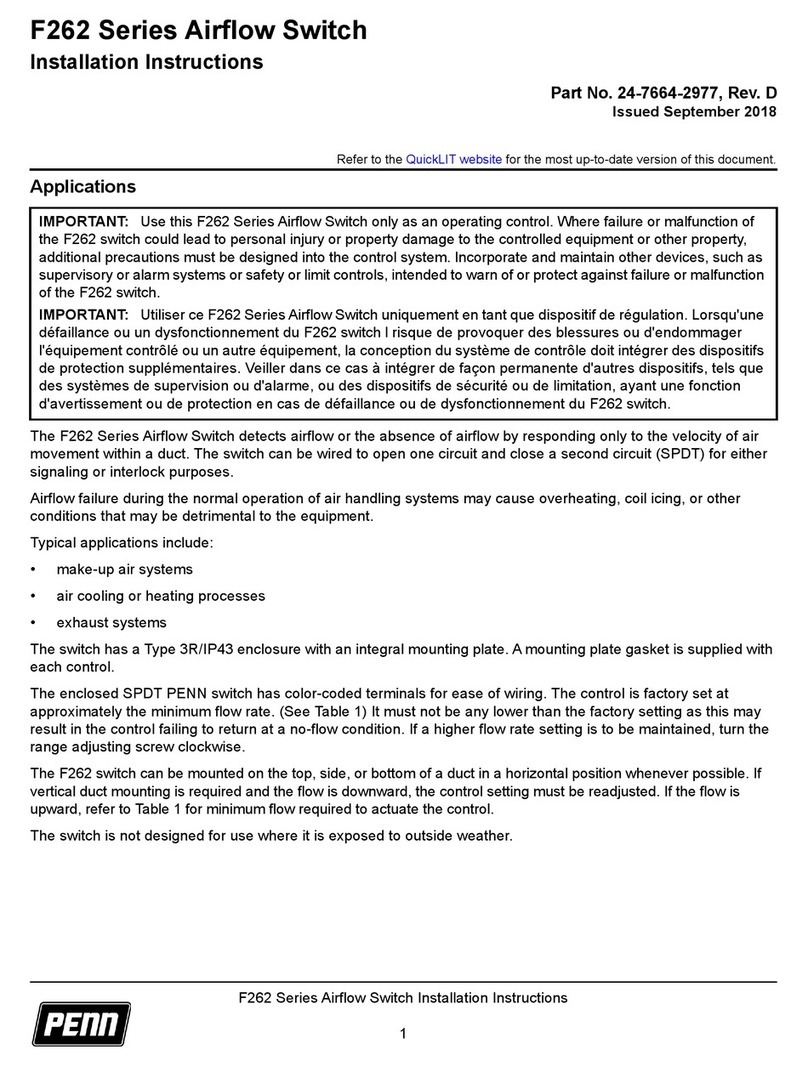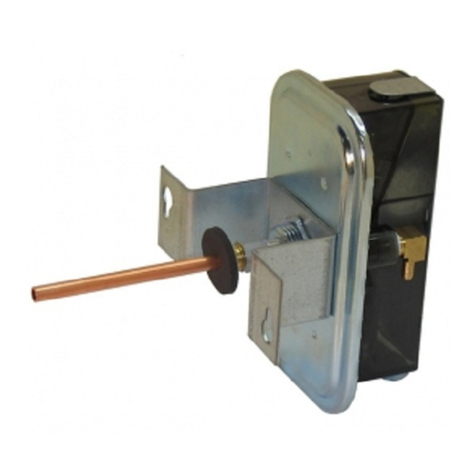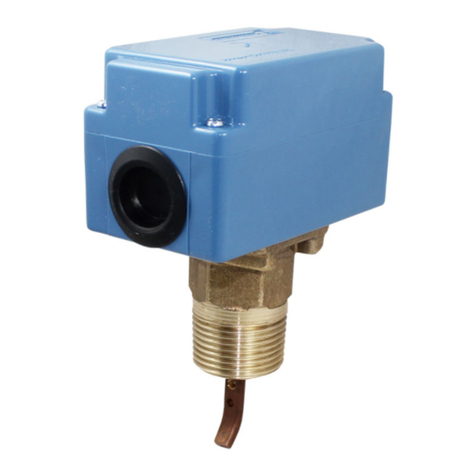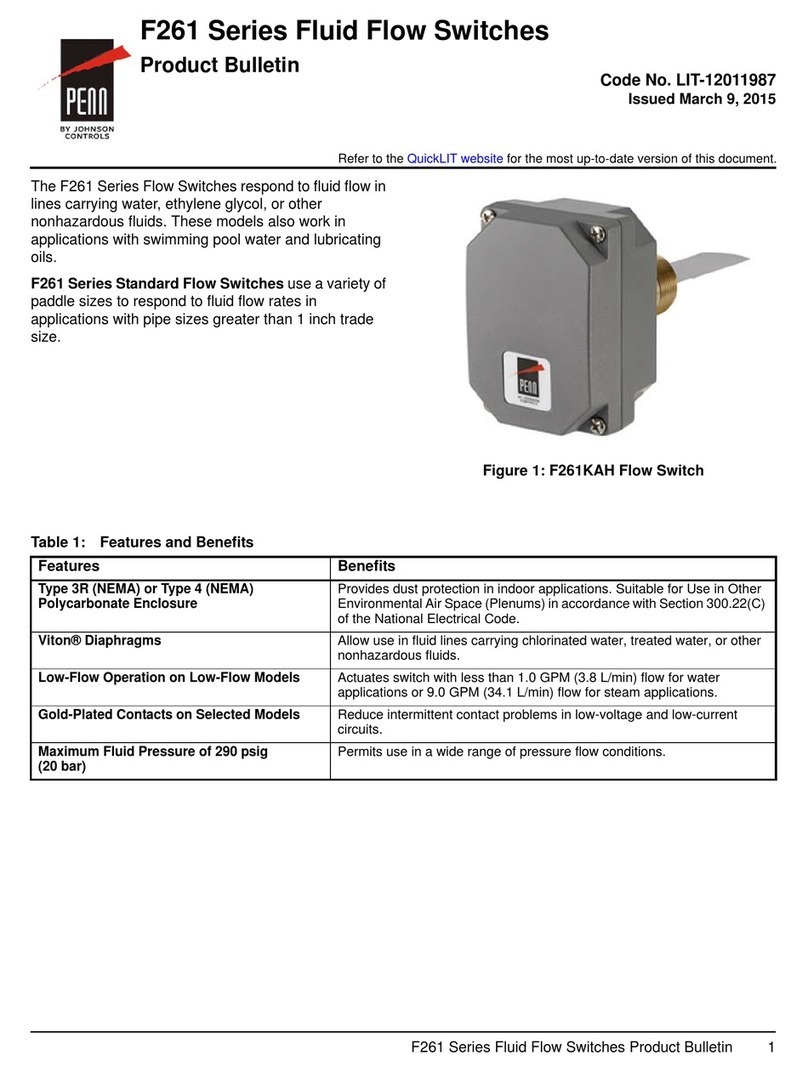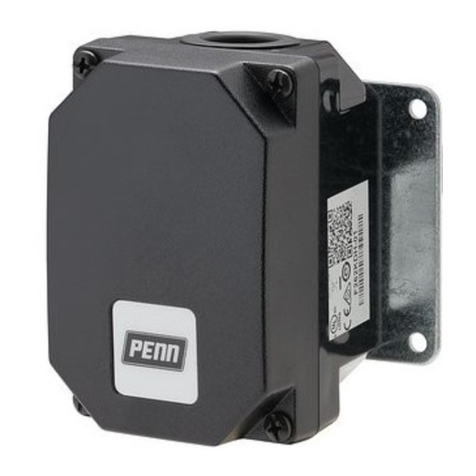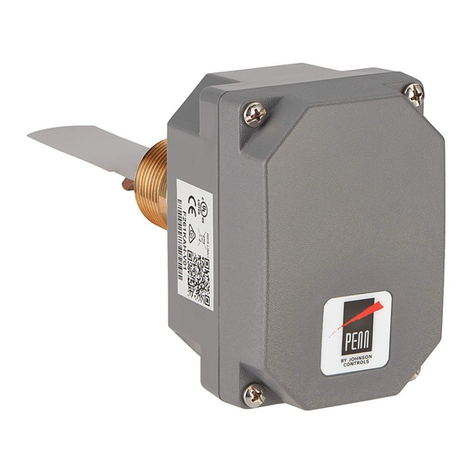
Operation
The flow switch responds to pressure that the flowing
fluid exerts on the fluid paddle. A range adjustment screw
adjusts the rate of the flow required to activate the switch.
For flow rates, see Table 7 through Table 9. For pressure
drop against flow rate, see Figure 14.
The red terminal is the Common. Red to yellow closes on
flow increase. Red to blue closes on flow decrease.
Table 10: F261 control switch action
Flow action Switch closure
Increase Red to yellow
Decrease Red to blue
Checkout procedure
Ensure that installation, wiring, and control settings are
according to the application requirements. Refer to the
controlled system’s manufacturer specifications for the
correct settings when adjusting these controls.
Apply power to the control and controlled equipment.
Cycle the controlled system at least three times at normal
operating conditions.
Repair information
Do not make field repairs, except for replacement of the
flow paddle. For a replacement control or paddle kit,
contact the nearest Johnson Controls®/Penn® distributor.
For more information, contact Johnson Controls/Penn
application engineering at 1-800-275-5676.
Troubleshooting
Table 11: Troubleshooting
Symptom Solution
Condensate water
appears within the
enclosure.
If the control has a Type 3R/IP43
enclosure, inspect the grommet
in the field-installed cable gland
or conduit fitting, and replace the
grommet if it is defective.
If the control has a Type 4/
IP67 enclosure, inspect the
case-to-cover O-ring provided
on the flow switch. Ensure
that the O-ring is in place and
undamaged. Ensure that the
control uses a correct cable
gland or conduit fitting for Type
4/IP67 applications.
Fluid from the
tank leaks into the
enclosure due to a
rod seal failure.
Replace the flow switch.
The switch does
not activate due to
debris in the switch
mechanism.
Clear any debris from within
the switch mechanism. Test the
operation of the switch several
times for correct operation.
The control switch
action is reversed.
Ensure that the connections
follow the wiring diagrams.
Table 11: Troubleshooting
Symptom Solution
The control does not
switch.
Check the electrical connections.
The switch fails to
return to the no-flow
position.
The switch may be set lower than
the factory setting. Increase the
setting.
On vertical pipes, ensure that the
direction of flow is up. The arrow
on the switch enclosure must
point in the direction of the flow.
The control does
not switch on flow
increase.
Check for a cracked or broken
paddle. Replace the paddle, if
necessary.
F261 electrical ratings
Table 12: F261xxH Series standard controls electrical
ratings
UL 60730/UL 1059 EN 60730Volts 50/60 Hz
24 120 208 240 24 230
Horsepower – 1 1 1 – –
Full load amperes – 16 10 10 – 8
Locked rotor
amperes
– 96 60 60 – 48
Resistive
amperes
16 16 10 10 16 16
Pilot duty VA 125 720 720 720 77 720
Table 13: F261xxL Series low energy controls electrical
ratings, AC current
UL 60730/UL 1059EN 60730Volts AC,
50/60 Hz 4 VAC 24 VAC 120 VAC
1Resistive
amperes1
10 10 10
2Pilot duty VA212 72 360
1 Maximum dry circuit rating: Resistive only, 400 mW at 28
VAC/VDC. After you use a relay at the general rating level,
the dry circuit rating is no longer valid.
2 Meets UL 100,000 cycle UL endurance test requirement at
switch with Tmin greater than or equal to 32°F (0°C).
Table 14: F261xxL Series low energy controls electrical
ratings, DC current
UL 60730/UL 1059/EN 60730Volts DC
4 VDC 24 VDC 48 VDC
1Resistive
amperes1
111
1 Maximum dry circuit rating: Resistive only, 400 mW at 28
VAC/VDC. After you use a relay at the general rating level,
the dry circuit rating is no longer valid.
F261 Series Flow Switches Installation Guide 9












